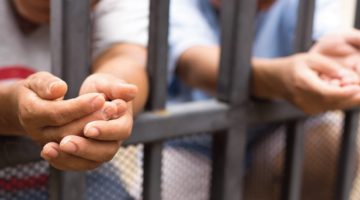There are a few new spins on the story of police killings- of black men- and/or unarmed men in general.
Spin number one:
If you expect to encounter a criminal, then you are more likely to see a crime, or an illegal weapon, or discern a criminal intention, where there might not be one.
In the American Sniper, a movie based on real events, there is one particularly tense scene in which the sniper spots a woman, presumably the mother of a young boy, reach under her cover and hand the boy an object. A bomb? The sniper waited; he didn’t want to take the life of an innocent boy, even though it was his job to accurately shoot the enemy-dead.
You know the ending. It was a clean kill.
Let’s peel this back a bit.
The sniper was in a declared combat zone.
The enemy was clearly defined.
Weapons were carried undercover, literally, sometimes under the chadors of women.
The US has a policy to limit collateral damage to innocent civilians.
Wait! That was in Iraq.
Do we have domestic war zones? Yes, they are called high crime areas. Are there domestic policies to limit the damage to innocent civilians?
This Sunday’s New York Times published an opinion by Lisa Feldman Barrett, a professor of psychology, and Jolie Wormwood, a postdoctoral research associate, in which they comment on police involved shootings. Their study looked at a Justice Department analysis of shootings by the Philadelphia police which reported that fifteen percent of those shot were unarmed; and in half these cases, an officer reportedly misidentified a “nonthreatening object (e.g. a cellphone) or movement (e.g., tugging at the waistband)” as a weapon.
The authors’ research suggests that the brain often perceives things that aren’t there, i.e., guns, crime, criminals. They go on to explain that brain perception consists of predictions about the world-thousands of them at a time- based on past experiences.
They refer to the perceptions as “neural guesses” which largely shape what you see, hear and otherwise perceive.
So, logic holds that police who are assigned to so- call high crime areas expect to see crime, criminals, weapons, etc., when there may not be any such thing.
So much for the science.
But what is it about policing itself that gets it wrong?
Let’s go back to Baltimore, where just this past week, the police, practicing a routine tactic, rousted a suspect in a high crime area. The suspect died from severe trauma to his neck and vertebrae while in custody. Oh yes, he was a black male, and he had something in his pocket (as it turns out, it was a legal knife).
Rousting? That’s when there is no suspicion of crime, but used in high crime areas to find criminals.
There is an investigation.
Spin number two:
Recent headline story: There has not necessarily been an increase in police brutality, including shootings, just more reports of same; and an increased use of social media- especially videos, to depict police brutality against unarmed black males, makes it appears to be more.
Don’t put down those cell phones!
But what we need to begin to document are the number of police encounters with non-black males, and record the differences in treatment.
Just this week, an officer is being congratulated for not shooting a white murder suspect because he already heard: 1) he had a mental issue; and, 2) he had a gun. The car dash camera clearly shows how the officer kept his gun pointed directly at the front of the suspect who, despite demands from the police to get on the ground, he continued to advance and demand that the officer shoot him.
He was arrested.
Not shot.
Not more incidents; just more reporting?
Thankfully, black media has been reporting on these issues, forever.
Beginning in the 1880s, Ida Wells Barnett, pioneer, built a media campaign on her brave crusade against the brutalization of blacks, men in particular, and often at the hands of sanctioned, nee, sworn officers, taking place across the South, What has changed?
The rhetoric.
How about this concept: good people (non-criminals) also live in high crime areas.
And they deserve better community policing.
They are victims too.
So, what can we expect from police officers who are likely not from the community they are assigned to, who disproportionately perceive danger based on their brain conditioning, experience, background, precinct culture, myths, fears, and poor training?
Especially if that community is vilified as a dangerous place.
Especially if, the clearly defined enemy is any/all black males.
Especially if the community itself closes rank; “No snitch” practices harm more than help.
Especially if police have unrealistic fear for their lives in certain communities. Police-issued weapons, vests, radios, and, a back- up force notwithstanding, fear overrides the reality of danger.
Last checked, police have the statistical advantage of being alive at the end of their shifts.
And, especially if black lives matter less than others.
Antonia Williams-Gary is a consultant with Miami-based Savings and Grace Enterprise. She may be reached at toniwg1@gmail.com













No Comment